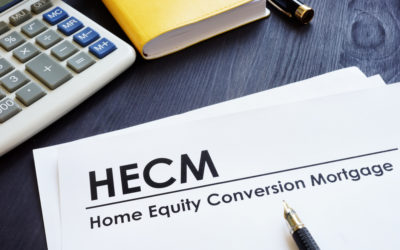Modified Tenure: Reverse Mortgage Modified Tenure Plans Explained
A reverse mortgage (or HECM program — Home Equity Conversion Mortgage) can offer retirees a high degree of financial freedom in retirement by providing them with monthly payments, a lump sum of cash, or a line of credit. Any option can be used to pay for things from daily expenses to fun vacations abroad.
However, some reverse mortgage applicants worry that they might outlive their benefits. For example, if a retiree chooses to receive monthly payments for a period of 15 years, but lives another 5 years after that, this may put them in a difficult financial situation.
A modified tenure reverse mortgage can help to solve this problem by splitting proceeds between monthly payments and a flexible line of credit.
What is Reverse Mortgage Modified Tenure?
Modified reverse mortgage tenure is a way to combine two different forms of disbursement: a line of credit and monthly payments. Reverse mortgages can be issued as either lump sums, monthly payments, or lines of credit. Some may worry that a lump sum or monthly payouts could run out while the borrower still needs them.
And, because a reverse mortgage line of credit grows over time, a borrower may worry that they will not have access to the funds they need immediately. Modified tenure allows borrowers to split proceeds between monthly payments and a line of credit that the borrower can choose to use, or allow to grow over time before using.
How Does a Modified Tenure Plan Work?
Modified tenure allows borrowers to access monthly payments and a line of credit. Here’s how that benefits borrowers who may be worried about outliving their reverse mortgage proceeds.
By splitting the proceeds between the two methods, borrowers can receive smaller monthly payments and a smaller line of credit. Monthly payments are more likely to last longer because they are smaller, and if the borrower is careful with their line of credit, it can grow over time as interest accumulates — helping to ensure the borrower does not run out of available credit.
How do reverse mortgage lines of credit work?
A reverse mortgage line of credit is an innovative way for a borrower to receive reverse mortgage proceeds. In this method of receiving proceeds, borrowers can collect the loan’s value as a line of credit that they may borrow from, similar to a credit card. As HECM interest rates on the reverse mortgage grows over time, so does the total value of the line of credit.
Many borrowers choose this option because it allows them to access funds at the rate they need, in the situation they need, and therefore better control how much of their loan value they have accessed and used. Ultimately, this helps to ensure that they do not run out of money.
What are Modified Tenure Payments?
Modified tenure payments are simply the normal HECM tenure payments that you receive when you opt for a modified tenure reverse mortgage. Modified tenure reverse mortgage payments are split between the portion that comes as a monthly installment, and the portion that a borrower uses through a line of credit.
Jump to…
Mortgage Interest Rate Index
When you apply for a reverse mortgage, lenders must conduct...
See More
 1-866-840-0279
1-866-840-0279






